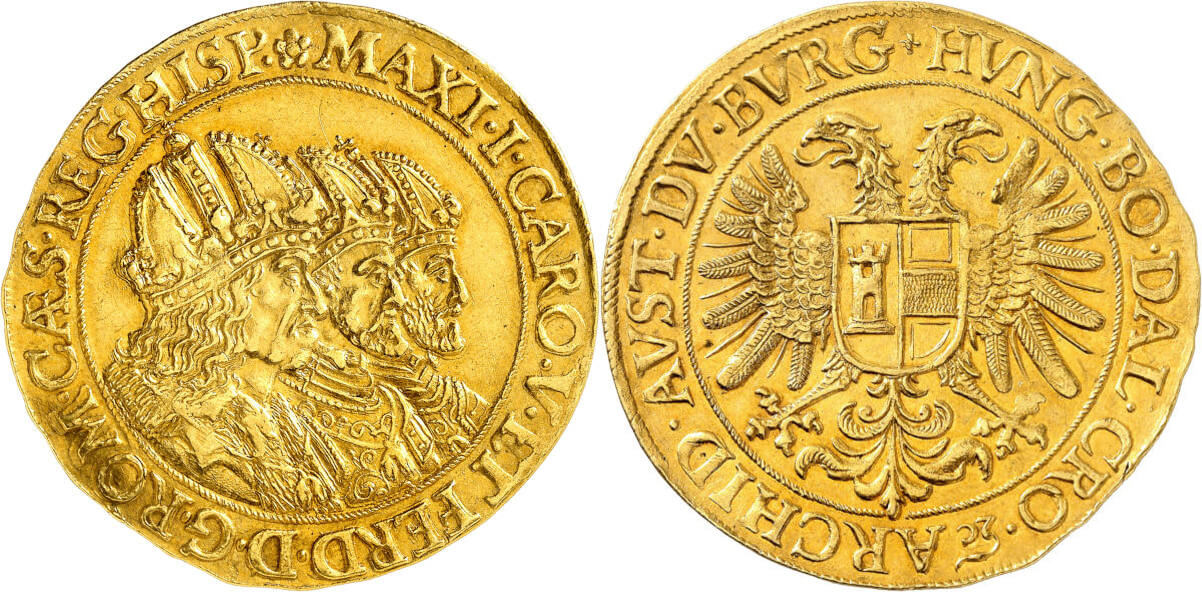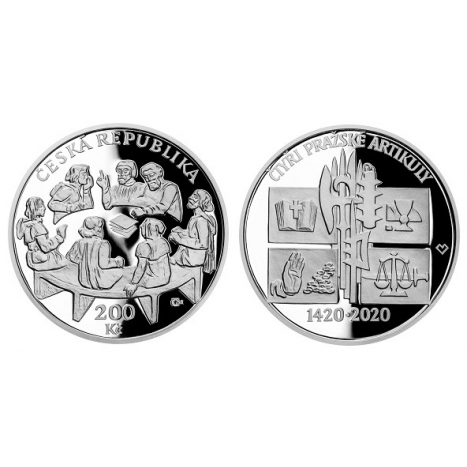Top Info On Scanning Czechoslovakia Medals
Top Info On Scanning Czechoslovakia Medals
Blog Article
How And Why Do You Use A Model Of A Plaster To Create A 3d Digital Model Of Gold Coins Or Medals?
This process makes use of specialized equipment to digitize the maquette and capture its dimensions. This digital replication serves various functions in the manufacturing process. the Scanning Process Works
3D Scanning High-resolution 3D scanners are used to capture all the dimension and details of the model. The scanners employ various techniques like laser scanning and structured light to record precise dimensions and geometrical shapes.
Surface Information Capture- The scanner emits laser or light beams at the plaster model's surface. The scanner captures any reflections or distortions created by laser beams and records the surface information of the model.
Data Collection - As the scanner is moved across the model, it collects an enormous amount of information, creating an image of the model's geometry contours, and other particulars.
Conversion into 3D Model. Specialized software transforms information gathered from data into a 3D representation. This model replicates the physical features and dimensions of the plaster maquette.
What are the reasons for creating a digital 3D model?
Digital 3D models are able to reproduce the exact details and dimensions of a real model. This is essential to ensure that the gold coins or medals that are produced match the intended style.
Digital models are easily modified and improved. Designers can modify the 3D model without altering the plaster model in its original form. This permits iterative adjustments or enhancements.
Compatibility with Manufacturing Processes Compatibility with Manufacturing Processes Digital 3D Models are compatible with different manufacturing processes like 3D printing, CNC machining, which allows the manufacturing of dies and molds to make mass production.
Digital 3D models are used as a reference for the design. Digital models can be saved to be used in the future, reproduced or historical documentation.
By scanning a model of a plaster and creating a precise digital 3D model, producers and designers are able streamline production, improve accuracy, and utilize advanced manufacturing technologies to produce gold medals or coins with accuracy. View the best Scanning and 3D Modeling Czechoslovakia gold medals more tips. including michael phelps medal, gold coins, gold coin values, 1936 olympics jesse owens, bullion dealers, old silver coin, 1 oz gold buffalo coin, medal gold medal, 1 4 ounce gold coin, gold price jm bullion and more.
What Is The Process By Which The Janvier Machine Transfer Gold Coins Or Medals From A Master Hub To A Working Hub?
The Janvier machine (also called pantographs or reducing machines) is a specific device that transfers the design of a medal or coin from the master hub onto the operating hub. Here's an overview of the process it uses to accomplish this Master Hub Creation-
The master hub is actually the original die, or mold, that has the exact layout for the medal or coin. It is made using CNC machining, or using other techniques of precision.
Setup for Janvier MachineSetup for Janvier Machine
The Janvier machine comprises an instrument to trace the design onto the hub master, and a cutter that duplicates the layout.
The Janvier machine is equipped with a master hub which acts as a template to guide the transfer of the design.
The process of tracing a design
The stylus of the Janvier machine follows the contours and details of the design that is on the master hub. The stylus tracks the shape of the design when it travels across the hub's surface.
Reduce the Design
The Janvier machine simultaneously copies the traced-out design onto the hub for work. It is typically made with softer components than the master wheel such as nickel or steel.
The cutting tool reduces, or copies the design to the hub that is working in a smaller or reduced scale as compared with the hub that is master. This reduces the size of the process of coining because it permits medals or coins to be struck in the sizes desired.
Accuracy and precision
Janvier's machine is operated precisely, ensuring an exact transfer of data from the master hub to the hub that is used for work. The machine can reproduce even the tiniest details and curves.
Quality Control-
The hub's working part will undergo inspection and quality control to ensure it meets the specifications and accuracy for the strike process.
Further Processing
The Janvier machine's hub of working is used to strike coins or medals. It serves as the mold or die for creating multiple blanks for medals or coins that have the design transferred.
Janvier is an essential element of minting because it has the ability to accurately reproduce and reduce intricate designs for coins or medals. These working hubs will then be utilized to mass produce medals or coins using the strike process. Read the top rated janvier processing Prague Mint gold medals blog recommendations. including gold and coin dealers near me, 1972 gold dollar, gold biscuit buy, gold american eagle price, 1 0z gold, 5 dollar gold coin, guardian angel coin, 20 dollar gold coin, gold coin prices, bullion price of silver and more.
How And Why Are Some Finishes Or Textures Like Matte Or Textured Surfaces Achieved Through Sandblasting?
This technique is employed for creating specific textures or finishes like matte, textured, or patterned surfaces, on coins or medals. The process of Sandblasting is explained.
Surface preparation- The medal or coin is placed in the form of a cabinet or chamber with a nozzle that is connected to an air compressor. Abrasive materials are usually stored within this chamber.
Abrasive Material Selection- Fine particles of abrasive substances, such as sand, silicon carbide, glass beads or aluminum oxide, are propelled on the surface of the coin or medal at high speeds.
High-Pressure Propulsion - Abrasive particles are delivered to the surface of an object using compressed gas or other high-pressure system. The finish or texture is determined by the force and speed at which the particles impact the surface.
Texture creation - By altering the surface's topography because of the effect of the abrasive particle creating a texture. This technique can be utilized to create a uniform texture or roughen specific areas.
Sandblasting that is controlled- Sandblasting can be controlled in terms of intensity as well as duration and angle of application in order to create different textures or finish. Different abrasives and pressure levels result in different outcomes.
Why you should sandblast
Texture variation - Sandblasting can create a variety of textures and finishes like smooth grains, frosted, or grainy textured surfaces. This adds visual interest to the medals or coins.
Aesthetic Enhancement- Sandblasting alters surface appearance. It helps diffuse light reflections and reduces shine. This increases the aesthetic appeal of a coin or medal. Matte finishes are a great way to highlight the design elements.
Anti-Glare - A matte surface or textured finish produced by sandblasting reduces reflections and glare. This makes the coins or medals appear more appealing, and also much easier to read, without unwanted light interference.
Contrasting Design ElementsSandblasting creates contrast between polished and textured areas on the coin or medal to highlight specific design elements or creating depth and dimension.
Customization and Creativity- Sandblasting offers customization options, allowing for artistic expression and the creation of medals or coins with distinctive texture or finish that is that are tailored to the specific requirements of design.
Sandblasting can be a diverse technique employed to create a variety of surface finishes or textures on gold-plated coins and medals that contribute to their aesthetics, appearance, and overall appearance. Take a look at the top sandblasting Prague Mint gold coins site info. including gold penny, saint gaudens gold coin, gold and coin near me, congressional gold medal, coin gold price today, canadian gold maple leaf coin, 1 10 gold eagle, double eagle gold coin, coin gold bullion, gold bullion cost and more.
How Are Gold Blanks Put Into Coin Presses Under High Pressure And Stamped?
During the minting process gold blanks are loaded into coin presses and stamped under high pressure to transform them into finished pieces of gold or coins. This article will provide an outline of the process for loading blanks.
Gold blanks, which have been previously prepared and inspected for quality they are placed into a feeder system, which is connected to the coin press. This feeder system ensures an ongoing flow of blanks.
Feeding Blanks on the Press
The feeder system is able to guide the blanks one after another into the striking chamber of the coin press. The feeder system ensures that each blank is placed precisely to be stamped.
Alignment and Positioning
The blanks will be aligned in the press and then placed into the room for striking, making sure they are centered and perfectly oriented to perform the stamping.
Striving Under Pressure
The coin press is made up of two dies: one stationary and the other that moves. The stationary coin die provides an image that is negative of the design. The moving die acts as a hammer to hit the blank, the stationary die also contains the positive impression.
The die is moved and struck the blanks with great force. The design is transferred to the surface of the blank. Die presses the design and create relief raised on the coin or medal.
Repetition of Striking Is Optional
Multi-strikes can be used to create high-end coins and medals like proofs or collectors' editions. This will result in a sharper and more defined appearance. Each strike improves the fine details of the surface of the blank.
Ejections and Collection
When the designs are struck and minted, the medals or coins created are taken from the presses. They then collect in trays and containers. The designs that are stamped are examined to determine if they conform to the standards set by the manufacturer.
Post-Processing-
In addition to edge lettering and reeding depending on the specifications for the design or mint specifications, certain medals or coins will go through post-strike treatments or other procedures.
The process of stamping under extreme pressure is vital because it transfers the desired design to the gold blanks, turning them into finished medals or coins that are ready for circulation, collection, or even commemoration. This process is extremely precise because any variations in pressure or alignment could affect the appearance and quality of the final product. View the top minting Czechoslovakia gold medals site info. including gold coins for sell, 1 0z gold, gold coin price today, gold coins for sale near me, gold silver dealers, silver nickel, american eagle gold coin price, gold dollar coin 2000, five dollar gold coin, 1 10 oz gold eagle and more.